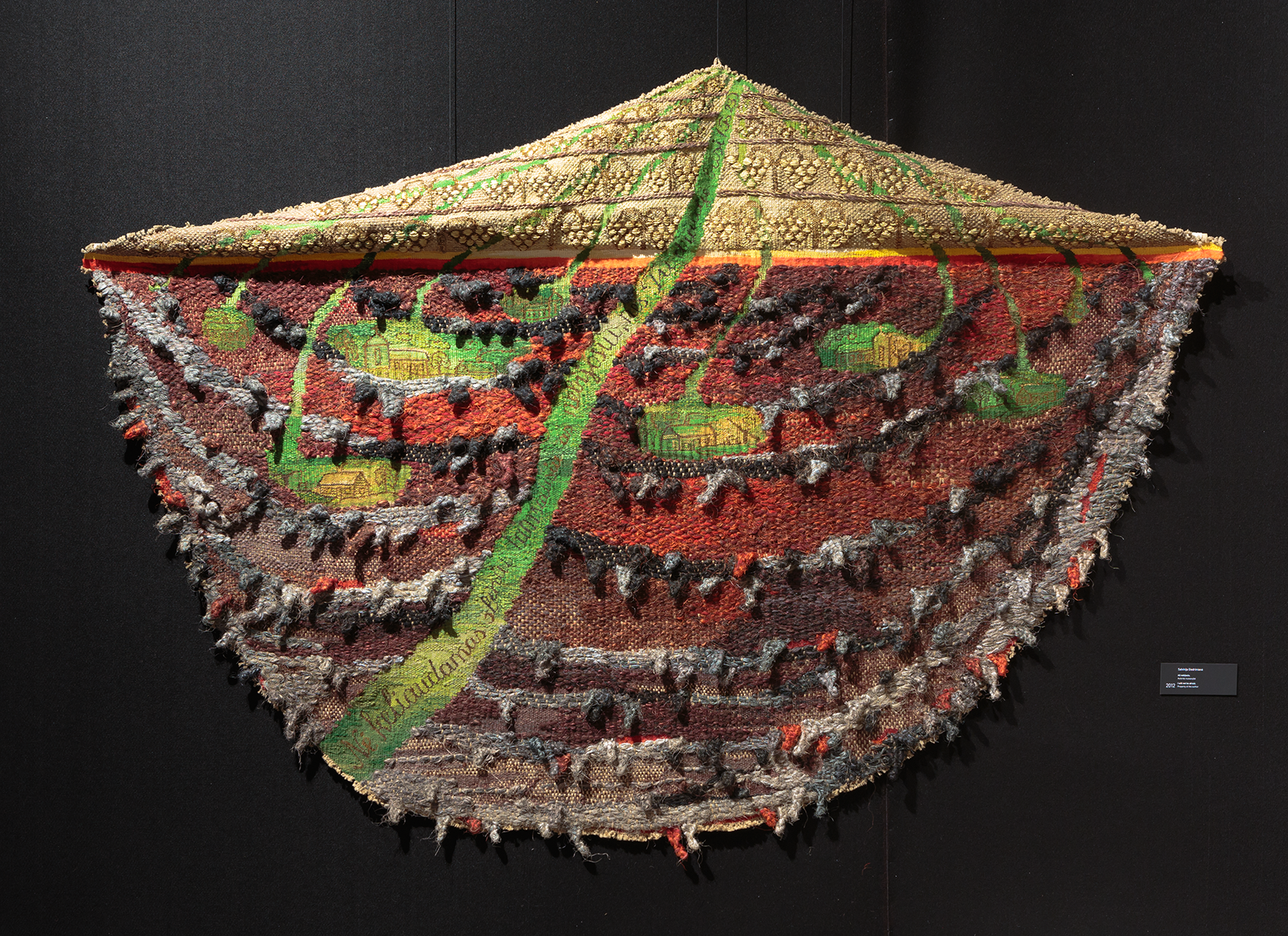Salvinija Giedrimienė textile exhibition "WAY"
7 Febuary - 14 April 2019

Salvinija Giedrimienė is a unique and versatile artist who has contributed a lot to the modernization of contemporary Lithuanian textile arts. The works of the artist, who entered the art scene in the early 1970s, were extremely innovative, influencing the process of renewal in the field of textile arts. In 1986 S. Giedrimienė was awarded the Lithuanian National Prize for her work. She was the first among Lithuanian textile artists who had received international recognition in the 20th century. In 1982 Giedrimienė was awarded the Grand Prix at the Quadrennial of Applied Arts of Socialist Countries in Erfurt (currently called Configura). The same year she was given the main prize at the Baltic Triennial of Applied Arts in Tallinn, and in 1986, she was awarded the special prize at the International Triennial of Tapestry in Lodz.
The 4th personal Gedrimienė’s textile art exhibition presents almost five decades of her oeuvre – From the first independent steps to the recent artistic quests. The name of her retrospective exhibition – Road – is not accidental, borrowed from the title of a particular tapestry made by the artist. The motif of the road is quite prevalent in her work and manifests in various shapes (a trail of a diagonally trodden path, busy railway lane, a bridge, a looming sight from the car window). It symbolizes the pursuit of goals, self- seeking in art, and demonstrates that a person is an eternal traveler on the road of life and creation. The exhibition can be divided into three creative periods that are identified with artistic purposes characteristic to each of them: mastering movement and dynamics in the early period (1973–1980), conveying spatiality in the fabric – the mature period (1981–1990) and seeking spiritual light – the latest period (1991 – to this day).
S. Giedrimienė’s style formed in 1970-1980s. Her maturation as an artist was influenced by the general atmosphere in fine arts and new tendencies in textile arts that dictated composition based on the principles of late modernism, artwork formats of irregular silhouette and plastic innovations. Artist, in search of her identity, resisted stereotypes, employed unusual themes, expressive forms, bright colors and tested spatial textile – the biggest innovation of the time. She was interested in the contrast between motion and statics, illusory and conditional space. The artist used details of disintegrating fabric and texture that were popular in the Western textile arts. She avoided closed classical compositions. The motifs in textile were presented in a fragmentary way, and were framed and laid down using assemblage. The artist has proved that a subjective view of the environment can also exist in textile arts. She also confirmed the commonality of her aspirations with other reformers of Lithuanian visual arts in the 1980s.
The exhibits were collected from museums and private and public interiors. And over a dozen recent artworks came from the artist’s studio. Next to the most famous Giedrimienė’s tapestries made in 1980’s (The Passing Express 1980; Changing Motifs 1982; Tartan Fabric 1986; Striped Fabric 1988 and others) you will find the previously unexhibited works. Currently, Giedrimienė is the only textile artist in Lithuania who is consistently working on religious topics. The exhibition features tapestries from Vilnius St. Joseph’s Seminary (it includes the series of 14 tapestries titled the Stations of the Cross 1996– 1999), The Curia of the Vilnius Archdiocese, and a monumental composition Holy Family from Palendriai Monastery of St. Benedict that took 3 years to weave (2005–2008). It was quite an innovative idea to start working on religious topics in the context of modernist Lithuanian textile arts which never had this tradition.
S. Giedrimienė is convinced that art should sublimate man and spread spiritual light and harmony. She wants her tapestries to counterbalance the destructivity of the world and spiritual darkness. The textile artist’s tapestries have been acquired by the Lithuanian Art Museum, the National Museum of Lithuania, the M. K. Čiurlionis National Museum of Art, the Church Heritage Museum, the Czech State Art Museum in Brno and some museums in Moscow. Her works can be found in the curia of Vilnius Archdiocese, the parish chancellery of the Blessed Jurgis Matulaitis in Vilnius, St. Joseph’s Seminary and its chapel in Vilnius, Palendriai Monastery of St. Benedict and private interiors.
Lijana Šatavičiūtė-Natalevičienė
3A Arsenalo st, Vilnius, Lithuania
+370 5 212 1813;
+370 5 261 25 48; +370 5 262 80 80.
tddm@lndm.lt












